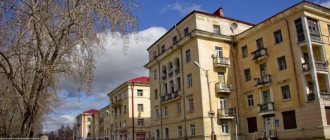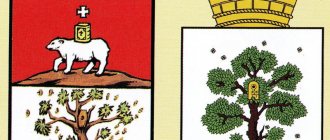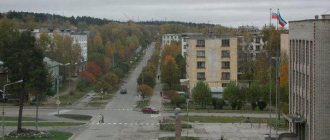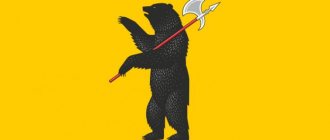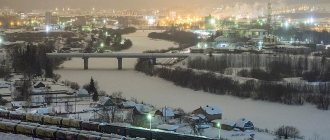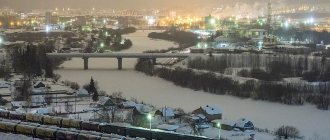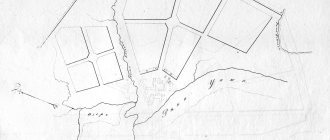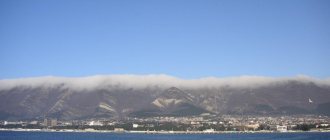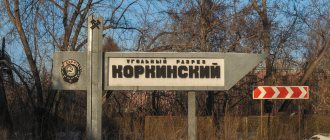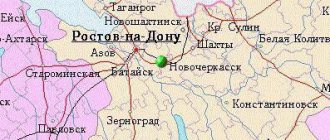Interesting Facts
The Karelian city of Sortavala is located on the northwestern shore of Lake Ladoga, on both sides of the Lyappajarvi Bay. Only 270 km separate Sortavala from the capital of the republic, Petrozavodsk, and 50 km from the border with Finland. As of 2022, just over 18,000 people permanently reside in the city.
Interestingly, there are several versions regarding the origin of the city’s name. For example, the famous Russian philologist Yakov Grot believed that the word “Sortavala” is based on the Finnish participle sorttawa (“cutting”), referring to the Vakkolahti Bay dividing the city into two parts. There is also a “church” version, according to which it was in the Sortavala region that the evil spirits expelled by the monks from Valaam went. And the name “Sortavala” (Finnish sorta from the Russian “devil”, valta - power) means “the power of the devil”.
No less interesting is the fact that in less than five hundred years Sortavala has been part of three states: Finland, Sweden and Russia. Moreover, the city changed hands several times.
- In the 14th - early 17th centuries, these lands were part of the Novgorod principality.
- Then, starting in 1632, they were under the control of the Swedish state for almost 100 years.
- Since 1721, when the Northern Ladoga region was conquered by Peter I, the territory is again considered Russian.
- Numerous wars did not benefit the city; it turned into the small village of Serdobol. Catherine II returned the village to city status and gave it a coat of arms.
- After the revolution of 1917, the entire northern coast of Lake Ladoga came into the possession of the Finns.
- Just 33 years later, after the Winter War, Sortavala returned to the USSR.
- With the beginning of the Great Patriotic War, the Ladoga region again passed to the Finns, and from 1944 it again became Soviet territory.
This whole change of power was reflected in the appearance of the city, its ethnic composition and cultural development. Having been under the rule of different countries in different centuries, the city now represents a mixture of architectural styles, but unfortunately, for the most part only from the 19th and 20th centuries. In 1903, a big fire occurred in Sortavala, destroying almost all the wooden buildings of the Old Town. However, there are enough surviving buildings to rightfully classify the city as one of the most interesting settlements in Karelia from an architectural point of view.
Sortavala
Video: Sortavala
Basic moments
The centuries-old chronicle of the city is rich in events that influenced the fate of the peoples of the northern countries of Europe, which allowed experts to rightfully include Sortavala in the list of historical cities of Russia. The mountainous landscape offering panoramas of Lake Ladoga and coastal islands, streets lined with ancient buildings, and the mild Karelian climate attract more and more travelers from Russian regions and Scandinavian countries to Sortavala. Sortavala is surrounded by natural and cultural reserves, the most famous of which are the Ladoga skerries and the island of Valaam with ancient Orthodox monasteries.
View of Ladoga
The city infrastructure is ready to receive guests with dignity. Sortavala has enough hotels and apartments, restaurants and cafes, and a well-developed service sector. In the protected forests on the coast of Ladoga, countryside tourist centers, sanatoriums, and family holiday homes have been built, offering rooms in hotel buildings or individual cottages.
A good rest in Sortavala is available at any time of the year. Summer tourism is interesting in its own way with invigorating swimming in the cool waters of Ladoga, lake cruises, rafting, and fishing. But winter activities with skiing, ice skating, and snowmobiling are also good. There are seasonal bases here for ice fishing enthusiasts and small game hunters. How nice it is, after a frosty fishing trip at a hole in the ice or a hike along a hunting trail, to steam in a Finnish sauna, cook your own fish soup or Karelian-style hare stew and sit by the fireplace! Guests of Sortavala are offered other entertainment, excursions to attractions, trips to cultural centers and museums.
Streets of Sortavala
History of Sortavala
Settlements of Finno-Ugric peoples have long existed on the territory of Sortavala. The first settlers in this region were the Sami, the oldest people of Northern Europe, who appeared in Scandinavia about 10,000 years ago, when the harsh climate of the Ice Age gave way to global warming and the ice sheet retreated to the north. Archaeologists have discovered here stone and iron arrowheads, bone needles for sewing clothes and hooks for fishing, the remains of hearths and dwellings. On the Ladoga Islands, which today are part of the territory of Sortavala, traces of fairly large fortified settlements of the 2nd millennium BC have been found. e.
Plan of Sortavala 1840
Researchers excavated a Viking Age settlement on the gentle southern slope of Mount Paasonvuori in the northern outskirts of Sortavala. This archaeological site is known as Paaso Fortification. Among the finds that allow us to date the village to the 10th-12th centuries are jewelry, household equipment, spearheads, and fragments of swords.
From the 13th century, the influence of Veliky Novgorod spread to the Karelian expanses; hermits and Orthodox chapels appeared here. In Russian chronicles, under the year 1500, the village of Rigola and the St. Nicholas Church are mentioned, belonging to the Serdobolsky graveyard of the Spasskaya volost of the Valaam Monastery. These locations were located on the island of Riekkalansaari, which is now part of the Sortavala city district. In the tax registers of the Kingdom of Sweden from 1590, the Karelian village of Riekka, in which there were three dozen farms, was recorded on the island. The settlements on the island of Riekkalansaari were strongholds for hunting and fishing teams that hunted fur-bearing animals and lake fish. An ancient trade route passed here, which led merchant boats from Ladoga along a network of rivers and lakes to the cities of Central Finland and further to the Baltic and White Sea.
At the turn of the 16th-17th centuries, the Northern Ladoga region became the subject of territorial disputes and the cause of military conflicts between the Kingdom of Sweden and the Muscovite Kingdom. By the beginning of the 17th century, these lands passed to Sweden under an agreement with Moscow. In 1632, at the behest of the Swedish king Gustav II Adolf, a village called Sordavalla was founded on the site of present-day Sortavala. Already in 1646, the expanding settlement was granted the status of a trading city.
Panorama of the city in 1939
In 1721, according to the Treaty of Nystadt, which ended the Northern War with Sweden, part of Karelia went to Russia. Sordavalla was also located on the newly annexed territory, soon renamed Serdobol. The city belonged to the Vyborg province. At the beginning of the 19th century, the province became part of the Grand Duchy of Finland, which was part of the Russian Empire. Serdobol acquired the status of a county town; the majority of its population were Finns. Educational institutions, vocational schools, a gymnasium for girls, a men's lyceum, and a theological seminary were opened here. Several enterprises operated in the city; a pier was built on the shores of Lake Ladoga for steamships connecting Serdobol with the island of Valaam, Shlisselburg and the capital of the empire - St. Petersburg. In 1893, a branch of the Karelian Railway coming from Vyborg was brought here.
After the revolution that overthrew the Russian Empire, independent Finland was formed. Serdobol, which ended up on Finnish territory, began to be called Sortavala. As a result of the Soviet-Finnish war of 1939-1940, part of Karelia was annexed to the USSR. Sortavala lay in ruins; settlers from Mordovia, Chuvashia, Ukraine, the Leningrad region, and other regions of the Soviet Union arrived to restore the city. But a year later, with the outbreak of the war between Germany and the USSR, Finland, an ally of the Germans, returned Karelia to its borders. In 1944, the Finns had to leave Sortavala again, which became a Soviet city. The population began to be dominated by immigrants from different regions of the USSR. Today Sortavala is one of the cities of the Republic of Karelia, part of the Russian Federation.
Sortavala in 1977
2007 Sortavala. Leander House
Geography
Sortavala is built on the rocky northern Ladoga coast, which is characterized by complex reliefs of granite layers, shales and other rocks. The local flora is characterized by northern plant species - Norway maples, spruces, rowan trees. The undergrowth is rich in berries, abundant in mushrooms, and Lake Ladoga is home to 65 species of fish. The reservoir is also home to a protected population of relict seals. Sortavala is separated from Petrozavodsk, the capital of Karelia, by 247 km along the highway.
Sortavala from above
Church on the island of Riekkalansaari
Valaam Island
The central city blocks are located in a wide amphitheater, cascading along the ledges of the mountain ridge to the lake. Opposite the city, islands covered with pine and deciduous forests rise from the water. The largest of them is Riekkalansaari, located 100 meters south of the coast. This is the largest island in the entire Ladoga water area, its area exceeds 53 km². Riekkalansaari and Sortavala are connected by a pontoon bridge crossing the strait; there are several small villages and farmsteads on the island, administratively included in the Sortavala urban settlement. There is practically no modern infrastructure on the island, the roads here are unpaved, there are no permanent berths for pleasure boats, drinking water and electricity are supplied from continental Sortavala. A number of other islands located in the district are under the jurisdiction of the city mayor’s office, including the protected island of Valaam, as well as part of the coastal Ladoga skerries.
Sortavala at night
Climate
Winter in Sortavala
Despite the fact that geographers and meteorologists equate the Sortavala region with the regions of the Far North, the water expanses of Ladoga and surrounding lakes and rivers smooth out the local climate: temperatures that are moderate by northern standards are observed here in both winter and summer. In January-February, the air temperature rarely drops below –10…–6 °C, and in March it already exceeds 0 °C. In June-August the air warms up to +18...+21 °C, and the holiday season reigns in the Northern Ladoga region. By the way, Sortavala has long been recognized as a climatic resort; doctors recommend that patients with pulmonary pathologies and cardiovascular disorders recover their health here.
In summer, the water temperature in Lake Ladoga fluctuates around +18 °C, which cannot be called comfortable for swimming. From about mid-November the lake freezes, the surface is covered with hummocky ice, which breaks up by mid-May.
The proximity of the harsh Arctic sometimes results in abnormally cold weather. The lowest temperature recorded at the Sortavala weather station was –42.8 °C.
March in Sortvala
Summer. Sortavala embankment
Sights of Sortavala
In the appearance of the central streets of Sortavala, typical Soviet buildings alternate with beautiful buildings built before the Second World War. All of them are included in the municipal and republican registers of architectural monuments. The main attractions are located around the main square of the city, named after Sergei Kirov, adjacent to it is a pedestrian zone. Among the architectural monuments are the St. Nicholas Church, built in 1873, the Lutheran Church of 1931, the spectacular buildings of the United Bank of the Nordic Countries and the Finnish Bank, designed by the famous Finnish architect Uno Ulberg in 1913 and 1915, respectively.
Leander House
The colorful wooden building of the former city hall (1885), surrounded by the Town Hall Square, the premises of the teachers' seminary (1883), and the building in the neo-Gothic style, which housed the men's lyceum (1910), are well preserved. One of the most beautiful buildings in Sortavala is the Leander House (1905), built in the style of Finnish national romanticism and reminiscent of a castle. According to the project, a bank was located on the ground floor, and apartments for rent on the second. Bank director Oscar Leander lived in one of them. Today Sberbank is located here. In Sortavala, not only stone, but also wooden historical buildings have been preserved - entire blocks of merchant residential buildings with shops and utility aisles from the mid-19th - early 20th centuries.
On Lenin Street, a stone's throw from the Seurahuone Hotel, there is a small well-kept square named after Väinämöinen, the mythical hero of the Karelian-Finnish epic “Kalevala”. In the center of the park, a monument was erected to the legendary Karelian rune singer Petri Shemeikka with a national musical string instrument in his hands - a kantele, which resembles an ancient Russian gusli. This monument, personifying the image of all folk storytellers of the famous northern epic, was erected in 1935, on the 100th anniversary of the first edition of Kalevala.
Monument to Soviet soldiersMonument to the rune singer
To explore Sortavala from a bird's eye view, go to the Vakkosalmi landscape recreation park, it is located in the western part of the city. The paths in the park are strewn with a thick layer of sawdust, pleasantly springing under your feet. There are many secluded corners where you can sit on a bench and breathe in the fresh air filled with the aroma of pine. The central alley will lead you to the stairs that rise to the top of the 63-meter hill. There is a panoramic platform, which offers spectacular views of the city and the expanses of Ladoga.
Vakkosalmi ParkView of Sortavala from the park
Path in the park
The Museum of Local Lore of the Northern Ladoga Region is located in a beautiful building built in 1905, at the address: Ladoga Flotilla Embankment, 5. Several thematic halls present the turbulent history of the region, collections of Karelian minerals, and archaeological finds. The ethnographic section contains household items and national women's clothing with patterns embroidered with copper thread. A separate exhibition is dedicated to Nicholas Roerich, who visited Sortavala at the beginning of the 20th century.
Curious tourists are accompanied by guides; the stories of the museum staff are very fascinating. The museum welcomes visitors from 09:00 to 17:00. In the summer, the day off is Monday, and from the beginning of September to the end of May the museum is closed on Sundays. The cost of inspection is 80 rubles, a ticket for holders of pension certificates and for students will cost 40 rubles, for schoolchildren - 25 rubles.
Museum of Local Lore of the Northern Ladoga Region Museum of Local Lore of the Northern Ladoga Region
One of the services of the local history museum is the organization of educational excursions around the city accompanied by guides. The duration of the walk is up to two hours, the cost depends on the route and the number of tourists in the group.
An old mansion of the 19th century in the center of Sortavala houses an exhibition of interesting works by an original local artist, the famous Karelian woodcarver Kronid Gogolev. Watercolors, paintings and graphics are presented here; wooden objects decorated with fine artistic carvings in the Karelian folk style attract attention. The exhibition hall is open from 10:00 to 20:00. A comprehensive ticket costs 500 rubles, viewing only carved paintings will cost 200 rubles, children under 7 years old are admitted free of charge. Gallery address: Komsomolskaya street, 6.
Kronid Gogolev Museum
Beaches
The wild and steep coast of the Northern Ladoga region, made of rocks, slightly slicked down by ancient glaciers, is not intended by nature itself for beach lovers. Actually, there are no comfortable beaches in Sortavala itself. The cold water in Ladoga is not conducive to long-term swimming, just as the steep rocky coast with crushed stone screes and boulders is not suitable for beach activities. There are no smooth descents into the water anywhere here; many meters of depth awaits desperate swimmers right at the water’s edge. But for those who want to swim in this sector of Ladoga there are some exceptions. A quiet beach can be found in the very center of the city, near the pontoon bridge leading to the island of Riekkalansaari. But further, to the right and left of the bridge, there is no place for vacationers; the entire coast is blocked by fences of private organizations and industrial enterprises.
Shore of Lake Ladoga
There is also access to water on two lakes located in the outlying residential areas of Sortavala, built up with faceless Soviet “Khrushchev” buildings. But the shores of these lakes are overgrown with reeds, and on the well-trodden path to the “beach” you can stumble upon broken glass.
A well-equipped beach is located southeast of Sortavala, near the village of Vuorio. Citizens and tourists prefer to sunbathe on the coasts of the islands located directly opposite Sortavala. There are quite gentle slopes into the water, explored by generations of local swimmers.
In search of the best beaches on Ladoga, you should go to the low-lying eastern coast of the lake. Good sandy beaches can be reached along the Sortavala - Olonets highway. Local residents praise the beaches in the villages of Uuksa and Pogrankondushi, located 80 km and 120 km from the city, respectively.
Varashev stone on the coast of the village of Pogrankondushi
Leisure
In Sortavala, travelers can enjoy jeep tours, hunting or fishing trips, and extreme sports enthusiasts can enjoy rafting along Karelian rivers.
One of the popular destinations for off-road trips is the Ruskeala mountain park, which is 27 kilometers from Sortavala. Here is one of the attractions of the region - a half-submerged marble quarry. Since 1766, finishing stone of several shades has been supplied from here to decorate the facades of buildings in St. Petersburg. The quarry was abandoned more than a hundred years ago, but in the adits made above the water level, in the light of lanterns you can still admire the marvelous marble patterns. Ruskeala Park is included in the list of cultural heritage sites of Russia. Entrance to the reserve is open from 09:00 to 23:00, ticket price is 150 rubles.
Karelian mountain park "Ruskeala"
Winter fishing in the vicinity of Sortavala
Those who want to combine a vacation with fishing can easily find a suitable tourist center in the vicinity of Sortavala, specializing in services for fishermen. Such bases are located on the shores of Ladoga or small surrounding lakes and rivers; the owners organize transfers, accommodation, rental of reliable boats and necessary equipment. As a rule, individual cottages are designed for a company of 4-6 tourists; the surrounding area is equipped with barbecues, volleyball courts and outdoor exercise equipment. You can choose a more comfortable base with a bathhouse, shooting range, billiards and other entertainment.
Local reservoirs are full of fish. The desired catch of guests is large burbot, whitefish, perch, and pike. There are trout in the rivers. Less fortunate anglers are content with roach, vendace, and perch, but the fishing process itself will bring no less pleasure.
One of the popular locations is the Black Stones recreation center on Lake Yanisjärvi, 30 km from Sortavala. On the vast territory of the cottage town you can ride in a light horse-drawn droshky or prance in the saddle. It has its own zoo, a two-story bath complex with saunas, a swimming pool and a living room with a fireplace. A buffet is offered for breakfast; if desired, you can pay for lunch and dinner in the restaurant. The cost of living in a hotel room is from 3,500 to 5,500 rubles per day (breakfast included). Renting a cottage for six people will cost up to 25,650 rubles per day.
Recreation center "Black Stones"
Country excursions
In the near suburbs of Sortavala, at a distance of 8-10 km from the city center, there is a picturesque arboretum, next door is the city botanical reserve. This park, founded at the beginning of the 20th century, features 250 species of plants, among them the famous Karelian birch with amazingly beautiful patterned wood.
30 kilometers north of Sortavala there is a unique natural phenomenon - the oval lake Yanisjärvi measuring 18 by 15 km. In the 20s of the last century, geologists put forward an interesting hypothesis: the waters of the lake fill the crater formed by a meteorite impact. According to scientists who examined the melted rocks of the lake bed, a huge block of rock from the asteroid belt crashed into the Earth about 670-700 million years ago. The shores of the lake are covered with ancient forests; two dozen rivers and streams flow into it. There are convenient places for swimming on the coast. 43 islands rise above the surface of the lake; tourists travel between them in kayaks and set up tents in secluded places with pristine nature. Experts assure that there is excellent fishing for pike and burbot here. Several tourist centers have been built in the vicinity of the lake, and the Janisyarvi railway station is nearby.
Lake Janisjärvi
One of the most popular excursions in Sortavala is a hike to the steep Ladoga skerries, which include 650 rocky islands in narrow lake bays. Pleasure boats come here and there are hiking trails.
But the most popular excursion from Sortavala is a trip to the island of Valaam, to numerous historical and cultural monuments, to world-famous Christian shrines.
Recreation center "Black Stones"
Purchases
There are no large shopping centers in Sortavala, but it is worth wandering through the small shops scattered throughout the city. You can inexpensively buy high-quality fashionable clothes, shoes, and unusual accessories there. In souvenir shops, in addition to dishes, T-shirts, caps, magnets with logos of local attractions, they sell products made of amber, items made of Karelian birch - cigarette cases, boxes, kitchen utensils. Jewelry made from semi-precious stones, which are mined in the depths of Karelia, are popular. Beads made from serpentine, garnet, and shungite look especially impressive. Sortavala sells high-quality cosmetics made from Karelian plant raw materials - shampoos, creams, balms.
Among the most popular delicious souvenirs is jam made from northern berries, young cones, and lilacs (from 300 rubles per 0.5 liter jar). Tourists who are not far from returning home buy Karelian berries during the season, and excellent fresh and smoked trout can be bought here at any time of the year.
Sortavala has long had a tradition of holding rich and vibrant regional fairs, where goods and products produced in the Northern Ladoga region were sold. And now, at the end of May and in the last ten days of September, seasonal fair markets are held in the city. Here they sell fish delicacies, high-quality canned mushrooms and berries, homemade smoked meats and pickles, industrial goods, handicrafts, and jewelry.
Local kitchen
In Sortavala, where there are always a lot of tourists, there is no shortage of cafes and restaurants. Every year their number increases. The cafe-restaurant "Relax", located on Karelskaya Street, 29, is considered one of the best in the city in terms of price and quality. There is excellent service and a varied menu. The cost of main courses is low - from 200 to 400 rubles. The establishment is open daily from 10:00 to 21:00, on Friday and Saturday the restaurant is open until 23:00.
Cafe "Relax"
You will find a good restaurant with reasonable prices on the embankment, in the youth center, next to the city pier, from where ships depart to Valaam. There is a veranda with a panoramic view of the lake.
It is worth visiting the respectable Piipun Piha restaurant with excellent cuisine. It is located on the shore of Ladoga, on Promyshlennaya Street, 44. The menu includes dishes of Finnish and Karelian cuisine. For visitors, compliance with the dress code is mandatory. The Lamberg restaurant, located on the island part of Sortavala, is also expensive.
Restaurant "Piipun Piha"
At the recreation center "Dacha Winter", located on Cape Taruniemi, 7 km from the center of Sortavala, there is an atmospheric restaurant "Gustav Winter". The tables are arranged in a spacious wooden pavilion with panoramic windows. In the evenings there is live music, and a fireplace with a brightly blazing fire adds a special charm to dinner. Signature dishes represent Scandinavian cooking and Karelian cuisine - fish solyanka, venison steaks, wild duck with pumpkin, roast chicken giblets, berry pies and other delicacies. Be sure to try the open figured wicket pies with various fillings (they are called Kalittoa in Finnish). They serve perfectly cooked fish from the morning catch, and offer a children's menu. The cost of dishes starts from 480 rubles. The average bill for a hearty lunch for two with imported beer and a decanter of Swedish Absolut vodka is in the range of 4300-4600 rubles.
Restaurant "Gustav Winter"
Thrifty tourists should pay attention to the Kalitka cafe on Komsomolskaya Street, 9, which offers excellent inexpensive pastries, tea, and coffee. Opposite is the Riviera dining room with a wide selection of first and second courses. The cost of a set lunch is 150-250 rubles.
Cafe "Kalitka" Dining room "Riviera"
Where to stay
Sortavala has four dozen comfortable hotels and apartments, inexpensive guest houses and hostels. There are mini-hotels, camp sites and sanatoriums in the picturesque surroundings of the city. As in all resorts, during the peak summer season prices for hotel accommodation in Sortavala increase.
Right at the pier of lake ships on coastal Lenin Street, 3, the Kaunis Hotel is located. Tourists traveling with children often stay here; the hotel has a nanny service to look after the kids. The cost of accommodation starts from 3650 rubles per day. The chef of the local restaurant is known for his culinary skills; wealthy citizens often come to have lunch or dinner at his tables.
Hotel Seurahuone at Karelskaya Street 22 was built in 1908, the facades of the historical building have been restored. Celebrities who came to Sortavala stayed here, among them the Russian artist Nicholas Roerich. The cost of living is from 3400 rubles per day.
Cinema Sortavala
Room at the Kaunis Hotel
The Sortavala Hotel is located in a five-story building with spacious loggias at 35 Karelskaya Street. The cost of living is from 4,560 rubles. There are two more hotels on Karelskaya Street - “Ladoga” (house no. 12) and “Volna” (house no. 18).
Hotel "Sortavala"
Hotel Ladoga
In 2014, a cozy hotel “Piypun Piha” opened on the shore of the bay (Promyshlennaya St., 44). A huge chimney rises above the building, which gives the hotel its name: “Piipun Piha” translated from Finnish means “House with a chimney”. A glazed veranda is attached to the end façade, where the restaurant is located. The cost of daily accommodation is 3800-4500 rubles, the price includes buffet breakfast.
Piipun Piha Hotel
Room at the Piipun Piha Hotel
For tourists looking for budget accommodation, rooms in hostels and guest houses are offered inexpensively. Thus, a room in the Yarvi hostel (Pervomaiskaya St., 50-A) will cost 1,450 rubles. In the Stars Hostel (Komsomolskaya St., you can spend the night for 800 rubles. There are also spacious family rooms with a kitchenette that can accommodate 3-5 people. This room will cost 1845 rubles per day. The hostel is located in a 4-story historical building in the center of Sortavala, next to the pier and bus station, within walking distance of the embankment, shops, restaurants and cafes.
Thus, a room in the Yarvi hostel (Pervomaiskaya St., 50-A) will cost 1,450 rubles. In the Stars Hostel (Komsomolskaya St., you can spend the night for 800 rubles. There are also spacious family rooms with a kitchenette that can accommodate 3-5 people. This room will cost 1845 rubles per day. The hostel is located in a 4-story historical building in the center of Sortavala, next to the pier and bus station, within walking distance of the embankment, shops, restaurants and cafes.
Hostel "Jarvi"Hostel Stars
Wealthy travelers who want to relax comfortably in nature stay at the Dacha Wintera park hotel. Cozy cottages are located in a coniferous forest on the shore of Ladoga. This premium hotel with an excellent restaurant is located in the suburban village of Tarulinna, 8 km from the center of Sortavala. The cost of living is from 6,600 rubles per day.
Park Hotel Dacha Wintera
Another luxurious country hotel, Ladoga Estate, was built in the Scandinavian style on the steep bank of the Ladoga skerries, 11 km from Sortavala. Luxury cottages have fireplaces, individual saunas with necessary accessories, and barbecues. On the territory there are two restaurants, billiard rooms and bowling alleys, slot machines, a bath complex with steam rooms, and a spa center. For travelers arriving on yachts, berths have been built, and there is even a helipad. Guests are offered seasonal entertainment: in the summer - fishing, hiking for wild berries and mushrooms, boat trips on the lake, in the winter - skiing, snowmobiling and other fun. Accommodation in a cottage with two or three bedrooms, a living room and a well-equipped kitchenette will cost from 28,380 rubles, breakfast included.
Ladoga Estate Booking.com
Transport
Sortavala fire station
City public transport is represented by small-sized PAZ buses. They serve 7 routes, running between the center of Sortavala and the suburbs, and operate a fleet of taxis. If necessary, you can call a minivan with 6-8 seats or a cargo taxi to transport bulky luggage and sports equipment.
From the Sortavala bus station, located in the center, on Kirova Street, you can get to northern Russian cities, including St. Petersburg, Petrozavodsk, Ruskeala, Lakhdenpokhya, Vyartsilya. A bus service connects Sortavala with the Finnish cities of Helsinki, Joensuu, Kuopio, Jyväskylä.
Twice a day - at 09:00 and 11:00, during the navigation period, the Meteor motor ships depart from the Sortavala city pier (Pristanskaya St.) to Valaam island. The cost of round trip travel is 2400 rubles, on Saturdays – 2600 rubles. Travel time is 50 minutes. In addition, monastery ships and private boats ply between the piers of Sortavala and Valaam.
City bus
Berth
Monument to the steam locomotive "Zelenogorsk"
How to get there
You can get to Sortavala from Russian cities by air only through Petrozavodsk, near which there is an airport of the same name. Direct regular flights there are currently only available from Moscow, so you will have to fly with a transfer in the capital. From Moscow you can get to Petrozavodsk by train, and then head to Sortavala by bus or train. You can find out in detail about how to get to Petrozavodsk here.
Sortavala railway station
Every day from 06:00 to 19:00 buses depart to Sortavala from the Petrozavodsk bus station (Chapaeva St., 3). You can get to the bus station from the railway station in 10 minutes, from the airport - in half an hour. The routes are served by city buses running from 06:00 to 22:30. The approximate duration of the trip from Petrozavodsk to Sortavala is 3 hours 40 minutes.
Travelers heading to Sortavala from the northern capital of Russia can buy tickets for train No. 350 St. Petersburg - Kostomuksha. It departs from the Ladozhsky station platform 2 times a week. The train will reach the Sortavala station in 5 hours 40 minutes, the parking time is 20 minutes. Another option is to go to Sortavala from the Finland Station by train, travel time is 4 hours 05 minutes. It is convenient to find out the schedule of trains and electric trains, as well as the current cost of tickets on the Tutu.ru website.
In 4 hours 45 minutes. You can quite comfortably get from St. Petersburg to Sortavala by regular bus. Transport departs daily at 17:30 from the Northern Bus Station (Murino village, Devyatkino metro station).
Calendar of low prices for air tickets
Monument to the Rune Singers
In the city center, on Väinämöinen Square, there is a monument to the Karelian rune singers. A rune singer is a person who sings runes - songs created on the basis of myths and folk epics. The blind storyteller Pedri Shemeikke from Suistamo was taken as the prototype of the rune singer.
Väinämöinen Square was created in 1935. Previously, in its place there was a modest park, which had the simple name “triangular”. But in 1935, when Finland celebrated the 100th anniversary of the publication of the first edition of the main Karelian-Finnish epic, “Kalevala,” a “Singing Festival” was held in Sortavala. The park was divided into four “green zones”, paths were laid between them, and where they connected, a monument to the rune singers was subsequently erected.
Shopping and souvenirs
There are many small supermarkets in Sortavala where you can buy clothes, shoes, and cosmetics. Souvenirs are sold both in grocery stores (for example, “Svetlana” on Kirova Street, 18) and in special shops.
Popular souvenir shops include:
- “Karelian souvenir” on Komsomolskaya street, building 8,
- “Souvenir shop” on Suvorov street, building 1;
- “Gifts” on Karelskaya street, house 25.
The “Souvenir Shop”, which is located near the pier, is in great demand. There is a wide range: there are cosmetics made from shungite, products from Karelian birch and birch bark, jam and other locally produced products.
If you want to enjoy fish and seafood, then welcome to the famous Akulovka store. It is located next to the embankment at the following address: Suvorova Street, building 1.
This is not only a store where you can buy groceries with you, but also a cafe. There are several tables in the room: there are not many seats, so on a busy tourist day there may not be any free tables left. Guests are offered dumplings with trout, Karelian fish soup, fish, wickets…
Photo: © Ivanova Ekaterina
What to bring with you from Sortavala:
- famous Karelian jam - made from pine cones, cloudberries, etc.;
- fireweed tea, which can be purchased in a beautiful gift package;
- Karelian balsam made from herbs;
- woolen mittens, socks and other items of clothing;
- various souvenirs made of Karelian birch;
- cosmetics and jewelry made from shungite - the stone for which Karelia is famous.
In addition, many magnets, mugs and plates with images of local attractions are sold in Sortavala. If you go to Ruskeala or to the Ahvenkoski waterfalls, you will also find a large selection of souvenirs there.
Photo: © Ivanova Ekaterina
central bank
Behind the Petri Shemeikko monument, on Väinämöinen Street, there is a building unique in its appearance - the Central Bank. In 1915 it was built for the Central Bank of Finland, and since 2010 it has housed the Central Bank of Russia. At first glance, the building seems as if it was carved into a monolithic rock, perhaps because the main facade is lined with large blocks of unique Serdobol granite - a material that was mined only on the shores of Ladoga.
There is no less pathos inside the building. Thus, the floor of the operating room is covered with mosaic slabs: small hexagonal tiles and large square ones. The walls are covered with narrow mahogany cladding panels, with numerous vertical bracings. Between the ceiling and the panels there is a profiled stone cornice with crackers located under it. The doors are made of mahogany and decorated with panels. If the Bank is open, be sure to take a look inside, it’s an impressive sight.
Architectural objects and monuments of Sortavala
Sortavala, whose attractions are mainly located in its central part, has preserved unchanged the example of the layout of a European city. This area of the city is known as a museum of European architecture of the early 20th century.
Leander House
In the center of Sortavala there are many buildings made in the Art Nouveau style. These include the Leander House, which was built in 1905 according to the plans of the Finnish architect E. Saarinen. It is located at the intersection of the street. Karelskaya, st. Gagarin and Main Square.
The unusual exterior decoration attracts the eye - high stove heating pipes, original shaped windows, a facade with floral patterns. The interior decoration was also distinguished by its elegance, but now only small fragments of it have survived - stoves with colored tiles and a central staircase.
A branch of the Finnish National Bank opened in a stone building that looked like a small castle. The name of the house is usually associated with the name of the second director of the bank. But there is an assumption that the customer of the building was a representative of the Leander city council.
Finnish Bank building
The monumental two-story stone building, which was built in 1915 in a neoclassical style with elements of neo-romanticism by the architect from Vyborg U. Ulberg, is distinguished by its severity and consistency of lines.
The cladding of the facade of the building, which is considered the main architectural value of the city, is entirely made of local gray granite, called Serdobol. The main entrance stands, bas-reliefs of the bank's emblem, flower beds, and heavy window sills are also hewn from Serdobol granite. The architectural monument is located on the street. Väinemäinen.
Siitonen Merchants' House
The building that currently houses the city administration is of historical and architectural interest. Built in 1907 by order of the merchants K. and N. Siitonen by the architect P. Uotila, the apartment building is made in the Art Nouveau style. Wide panoramic windows add air to the austere building.
The difficult-to-pronounce surname of the building's owners comes from the Russian surname Sidorov, which was difficult for Finns to pronounce. The premises on the first floor were rented out for shops, and apartments were located on the second and third floors.
Church of St. Nicholas the Wonderworker
St. Nicholas Church is one of the first stone Orthodox churches in Sortavala. The temple was erected in the second half of the 19th century, mostly with donations from the St. Petersburg merchant G.P. Eliseev, who won a large sum of money in the lottery. The God-fearing merchant decided to spend his unexpected winnings on building a church, thereby writing his name in the history of the city.
Temples and cathedrals of Sortavala
In Sortavala, along with services in Orthodox churches, services are also held in the Evangelical Lutheran Church.
Church of St. John the Evangelist
The current Orthodox Church of St. John the Theologian, located on the street. Kirov, next to the bus station, built in 1931 by the Finnish architect J. Viiste.
The brick building with an attached bell tower in the shape of a tent was created in the traditions of Finnish wooden architecture of the 17th century, with a slight deviation from the established requirements of Orthodoxy. Thus, there are no domes on it, the altar is separated from the main room only by an openwork metal lattice.
Until 1942, the temple was part of the Finnish Orthodox Church; in Soviet times, the church did not function; it housed workshops and a cinema. Since 1992, it has been returned to the Russian Orthodox Church.
Evangelical Lutheran Church of Ingria
In 1990, in Sortavala, due to ethnic differences between Karelians and Finns, a Lutheran community was formed, which became part of the Evangelical Lutheran Church of Ingria.
In memory of the wooden church destroyed during the war on the street. Kirov, a stone building of a new temple was built. Now it is an active church, where services are regularly held in two languages - Karelian and Finnish.
Chapel of the Icon of the Mother of God of Kazan in Humpel
A functioning Orthodox chapel in the village. Humpel was built in 2009 on the site of a building destroyed in the second half of the 20th century. church of the same name on the initiative of residents of nearby villages. The main funds for construction were provided by the local parish.
The wooden chapel has the shape of a cube, with a low hipped roof. The building is clearly visible from the Vyborg highway.
Sortavala Town Hall
Another decoration of Sortavala is the small wooden building of the city hall, built in 1885. By the way, one of the few wooden buildings in Sortovala that survived the fire of 1903. Nowadays the former town hall houses the city library. On the facade, right under the roof, there is a window with an arched pediment - before the Second World War, the medallion of this window had the coat of arms of Sortavala on it. The roof of the building is topped with a small turret with a spire and a weather vane.
How to save money on a hotel in Sortavala
Since the city is small, it is better to book a hotel here in advance - in the summer or on New Year's holidays, good options are usually sold out several weeks in advance.
Most hotels and hostels are concentrated in the city center - across the bridge from the train station. If you want to live within walking distance of historical attractions, museums and restaurants, then it is better to stay in this part of Sortavala.
The following services will help you choose the appropriate option:
Hotellook.ru is a site for searching hotels, hostels and apartments. It compares prices in more than 50 booking systems (Booking, Ostrovok and others) and finds the best special offers.
Mir Turbaz is a service for booking tourist, fishing and hunting recreation centers, guest houses in different parts of Russia.
Selection of hotels in Sortavala
Kronid Gogolev Museum
Continuing the theme of wood, one cannot fail to mention the museum of Kronid Gogolev, an outstanding Karelian woodcarver. The museum is located in an old Finnish building built in 1899, and its main exhibits are sculptural wooden bas-reliefs and some paintings. The main theme is northern landscapes, life and everyday life of peasants. The accuracy, detail and harmony of the works presented in the museum evoke only one feeling - immense admiration for the talent and hard work of the artist. The museum is a must-see for all visitors to the city.
When is the best time to go and the weather on the Norwegian website
It is better to come to Sortavala in spring and summer, when the trees are blooming and there is a fabulous aroma in the air.
During the warm season, all excursions are open to visitors.
In winter, the city goes into hibernation. The harsh northern nature often pleases residents with snowfalls, the roofs of houses are covered with snow caps, and there is slush on the streets. You won’t be able to visit significant places at this time of year; it’s hard to even go up to the park.
The exact weather forecast in the city can be found on the Norwegian website.
Museum of Northern Ladoga Region
In the southern part of the city on the shore of Läppäjärvi Bay, in a historical building built in 1903, and known as the city estate of Dr. Winter, there is the Museum of the Northern Ladoga Region. This is the only local history museum in Sortavala, so if you want to better study the history of the region, then you won’t find a better place.
The museum's exhibition is quite extensive for a provincial institution. Medieval Swedish armor, samples of rare types of granite and marble, works of folk artists of Karelia, historical photographs, handicrafts and other interesting artifacts are stored here. A ticket to visit the museum for an adult costs only 100 rubles.
Where to stay?
Sortavala has a developed service sector, many hotels and apartments, cafes and restaurants. In the forests on the shores of Ladoga, sanatoriums, holiday homes and tourist centers have been built, which provide rooms in cottages and hotel buildings.
The best hotels: Ladoga, Piipun Piha, Kaunis, Seurahuone and others
Not far from the pier, on Lenin Street, there is the Kaunis Hotel, convenient for travelers with children, where a special service has been created to look after children. The skill of the local chef is known to residents; wealthy citizens come to dine here.
The Seurahuone Hotel was built in a building on Karelska Street in 1908, where famous people stayed. During his visit to Sortavala, Russian artist Nicholas Roerich lived here.
Pictured is the Piipun Piha Hotel:
The Sortavala Hotel is located in a five-story building with spacious loggias on Karelskaya Street. The Ladoga and Volna hotels are located on the same street.
On the coast of the bay on Promyshlennaya Street, the Piipun Piha hotel opened in 2014. The chimney that dominates the building gives the hotel its name, which means “House with a Chimney” in Finnish.
For wealthy tourists, a premium class hotel is the Park Hotel Dacha Wintera with an excellent restaurant. Luxurious cottages are located in the village of Taruniemi, 8 km from the city center in a coniferous forest on the coast of Lake Ladoga.
In the photo is the Ladoga Estate Hotel:
11 km from Sortavala on the shores of Ladoga there is a chic country hotel “Ladoga Estate”, built in Scandinavian style. Tourists have cottages with fireplaces and saunas at their disposal. On the territory there are two restaurants, a bathhouse complex, a spa center, berths and a helicopter pad.
You can also recommend: forest hotel Rantala, Sofia, mini-hotel Impulse, Swallow's Nest, Gate, Guest House Seasons and Scandinavia.
Hostels: Lampa, Yarvi and Stars
Rooms in hostels and guest houses are available at budget prices. In "Yarvi" on the street. Pervomaiskaya issue costs 1,450 rubles. Night at Stars on the street. Komsomolskaya costs 800 rubles, within walking distance there is the city embankment, shops, cafes and restaurants. We can also recommend the Lampa hostel.
Winter's dacha
Another attraction associated with the name of the very famous doctor Gustav Winter in Sortovala is located outside the city, but we still decided to include it in our list. The fact is that the history of this building is very interesting, and fully reflects the personality of its creator.
The dacha for Dr. Winter, a famous surgeon and public figure in Karelia, was built in 1909 by the young and talented architect Eliel Saarinen. The building is located on Cape Taruniemi and belongs to the “Northern Art Nouveau” style that was fashionable at the beginning of the 20th century. However, even more interesting than the building itself is the arboretum located on the adjacent territory. Now more than a hundred species of different plants grow here. Neat paths laid among lawns, playgrounds and hedges create a unique architectural and landscape ensemble here. This is an ideal place for a walk that will never get boring.
Train Station
Sortavala railway station is located across the bridge from the historical part. From here you can reach the city center in 20-30 minutes. Alternatively, you can take a taxi.
Photo: © Ivanova Ekaterina
The station building is small, but it has everything you need: including ticket offices, a waiting room and storage rooms. If you have small luggage with you, you can leave it in the storage room.
By the way, not far from the railway station there is a monument to the steam locomotive Er 788-81.
Photo: © Ivanova Ekaterina
Important: starting from the summer of 2022, another railway station opened in Sortavala, which is located closer to the city center (walking distance to Kirov Square is about 10 minutes). It is called Sortavala Center and is located on the dam of the Vakkolahti Bay of Lake Läppäjärvi.
Now the high-speed train “Lastochka” from St. Petersburg stops not only at the railway station, but also reaches the final station Sortavala-Center. So you can go to this station to be closer to the old part of the city.
Karelian bridge and pier
The Karelian Bridge connects the areas of Kymel and Sortavala separated by the Vakkolahti Bay. It has impressive dimensions (length 220 m, width 11 m) and at the same time looks incredibly elegant and light. Built in 1932 for the 300th anniversary of Sortavala, it became the first bridge to be included in the street network of Finland.
By the way, at that time it was the longest in Finland. Due to increasing loads from the mid-1970s, the bridge began to sag. “Local” repairs did not help much, and in 2013 a major reconstruction was carried out, as a result of which the bridge acquired a new shape. Looking at Läppäjärvi Bay from the Karelian Bridge, you can see that the entire left side of the coast is a pier:
- first a small pier at the Seurahuone Hotel;
- then Bonn - rowing kayaks are put on the water from there;
- then the rescue station and its small fleet;
- a place where passenger hydrofoil boats dock;
- further on there is a mooring pier for steamships, motor ships, and fishing boats.
There are currently no long-distance flights from the main city pier - only to Valaam. Fast "Rockets" and small motor ships carry about 20% of all tourists and pilgrims heading to the island.
How to get to the transport center on your own?
There are no planes flying to the provincial Karelian town; only a railway station and a bus station operate. If you choose public transport, it is better to get to Petrozavodsk first. The bus station in Sortavala is located within walking distance from the pier and the city center.
Train schedule from Moscow and route from Petrozavodsk
- Plane + bus. Regular flights to Petrozavodsk are operated by Pobeda Airlines from Vnukovo Airport. From the bus station in Petrozavodsk to Sortavala 10 times a day - from 05:00 to 19:00 hours, bus routes are organized, designed for 5-7 hours of travel. The bus schedule can be found here. By car or minibus along the P-21 highway, the journey takes 4–5 hours.
- By train. The best option is, which departs from Leningradsky railway station at 21:05 and arrives at 9 am, and then on the bus route. The Moscow-Murmansk train arrives in Petrozavodsk at 16:45, and they get to Sortavala only at night. You can get to St. Petersburg by rail, and then to Petrozavodsk by bus or train.
- By car. The distance along the M 10 highway is 983.8 km. Travel time is 13-14 hours. You can get to the ring road around the Northern capital in 9 hours and spend the night at a hotel, and then go to Sortavala in the morning.
*The map can be downloaded here.
In the search form below you can see the cost of train tickets:
By Lastochka or bus from St. Petersburg
- By train or train. The branded “Lastochka” departs from Ladozhsky Station in St. Petersburg several times a day, the schedule of which depends on workload. Travel time is 4 hours. The train runs twice a week, less often three times.
- By bus. The first flight departs at 09:20 from the Northern Bus Station, then two flights depart from the OK shopping center at 10:00 and 11:00. When traveling by bus, the time is 5 hours. Tourists arrive in Sortavala no later than 15:00.
- By car. From St. Petersburg, you can easily get to Sortavala by private vehicle along the A-121 highway of the same name, which has many blind turns. If there is a 40 km limiter, it is better to slow down, otherwise it is easy to fly off to the side of the road. The distance along the highway to the city is 280 km, which can be covered in 4 hours without taking into account traffic jams.
*The map can be downloaded here.
Valaam Island
And concluding the story about the sights of Sortoval, which are actually enough for a good-sized guidebook, and not for a short article, we simply have to mention the island of Valaam. This is a truly special place, where a huge number of pilgrims and ordinary tourists strive to get to every year.
It cannot be said that this is to the benefit of the monastery, as a place where they strive to find peace and move away from worldly life, but such, as they say now, are the realities. In any case, the architectural ensemble of the island is considered one of the most interesting among the churches of the Russian North, and is definitely recommended for visiting.
Many tourists and pilgrims heading to Valaam often perceive Sortoval as a kind of “transshipment point” on the way to the island, forgetting that the city deserves attention in itself. We hope that our article will make you take a different look at this small Karelian city with a rich history.
Weather
You can go to Sortavala at any time of the year. If you like warm weather, long hikes, boat trips around the skerries and islands, then come here in the summer. The average temperature in the summer months is about +15 degrees.
Photo: © Ivanova Ekaterina Photo: © Ivanova Ekaterina
The natural attractions are no less magnificent in spring and autumn, but at this time it becomes colder. If in May and September the weather is still quite warm (about +13 degrees), then in March-April and October-November the temperature does not rise above +5 degrees.
On the other hand, in spring and autumn it is interesting to go to the waterfalls, when they are filled with water to the maximum due to rain or melting snow. And how colorfully the autumn forests shimmer!
Photo: © Ivanova Ekaterina Photo: Kokoulina / Shutterstock.com
In winter, the average temperature is -10 degrees. Again, the city and natural places look completely different: to get the full experience, it’s worth visiting Sortavala and the surrounding area in different seasons.
Snow-covered landscapes, ice cover on Lake Läppäjärvi, and winter activities make Sortavala a popular destination even in cold weather – especially on New Year’s.
Sortovala in Karelia: attractions in the area
It so happened that in addition to the island of Valaam, in the immediate vicinity of the city of Sortavala there are a dozen more attractions of the first magnitude. It is hardly worth trying to visit them in one trip, but it is, of course, necessary to at least list them here. Just so you understand how rich our Karelia really is.
So, within a radius of 30 kilometers from the city of Sortovala there are:
- Ruskeala waterfalls. An impressive cascade of four flat waterfalls.
- Paaso settlement. An ancient monument with a magnificent view of the surrounding area.
- Mount Owl. Military history museum inside a real underground bunker.
- Zoo "Zoogreenpark". Huge territory and a variety of animal species.
- Mountain park "Ruskeala". One of the most famous and visited Karelian attractions.
As you can see, there are more than enough interesting places to visit in the area. If you need similar descriptions of the sights of the city of Sortavala with photos, then look for them in this section of the site.
Top 5 places suitable for holidays with children
Young tourists will find it interesting to visit the city’s natural reserves and explore some of the architectural monuments and historical places.
Zoo
In the village In Kirkolahti, at the Black Stones recreation center, there is the Karelian Zoo, where you can get acquainted with a large collection of ungulates and birds. The area of the zoological park is about 10 hectares.
A children's petting zoo has begun operating on the territory, featuring tamed animals that do not pose a danger to children. The cost of an adult ticket is 400 rubles, a child ticket is 300 rubles.
Husky kennel "White Runa"
In the Sortavala region, in the Belaya Runa tract, there is a nursery where dogs of the Northern Husky breed are presented. Dog trainers conduct excursions where they talk about the life of dogs, the characteristics of the breed, and the history of sledding.
In summer and winter, you can ride along a 1 km long track on a dog sled and take unique photographs. The cost of visiting for adults is 3000 rubles, for children 2250 rubles.
Wishing Stone
On the shore of Lake Läppäjärvi there is a large natural stone with a rough surface. Local legend says that any wish will certainly come true if you rub your hand on a stone.
Residential building with lantern
On the street Komsomolskaya there is an interesting house that was built in 1915.
Its main highlight is the huge lantern on the roof of the building, reminiscent of a medical syringe.
Military History Museum named after. Colonel A.L. Bondarev
In 2016, in the building where the Zarya cinema was previously located, on the initiative of a public organization of veterans, a military history museum was opened. The exhibition includes finds collected by the Ladoga search team over the 30 years of its existence, as well as personal belongings of local residents. The lessons of courage held in the halls of the museum attract a large number of children and teenagers.
